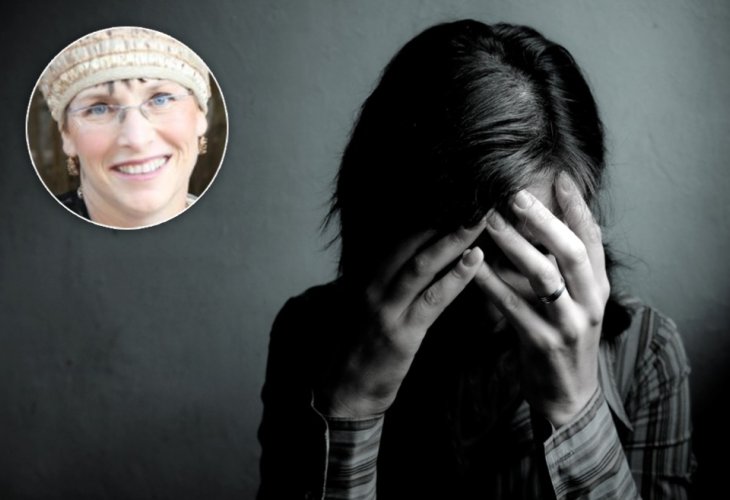Depression and Anxiety
Understanding and Treating Depression: From Postpartum to Seasonal and Chronic Conditions
Explore the different types of depression, their symptoms, causes, and proven treatment methods.
 Psychologist Dana Zalinger inset (illustrative photo: shutterstock)
Psychologist Dana Zalinger inset (illustrative photo: shutterstock)
When Hannah gave birth to her second child at the age of 27, she experienced postpartum depression. Her mood was generally fine, she enjoyed caring for her children, but she faced other issues. She slept a lot (too much), and ate very little. She also felt a deep sense of worthlessness and had no motivation. As a result, she kept berating herself- “What kind of mother am I?”
When it was time to return to work, she felt completely incapable. How would she manage going back to work and also caring for her kids? These thoughts tormented her relentlessly, until she realized she couldn’t pull herself out of this alone and she needed help.
Hannah turned to Dana Zellnger, a psychotherapist and member of the Israeli Association of Family Counselors and Therapists. Dana reviewed the symptoms and concluded that it was postpartum depression. It also emerged during their conversation that Hannah had experienced the same symptoms after her previous birth. At the time, she didn’t receive treatment, which significantly impacted her quality of life.
“We began the therapeutic process,” Zelinger recounts, “with a great deal of support and empathy. We identified the values most important to Hannah which included functioning better as a mother, and being able to go back to work and provide for her family, without compromising her care for her children. Through the process, Hannah gained clarity about what really mattered to her and what she was willing to let go of. The process included weekly tasks Hannah chose that aligned with her values and brought her joy. It wasn’t an overnight transformation, but a gradual step-by-step journey with ups and downs. We also involved her husband in the process, so he could offer support and understand that her difficulties weren’t due to laziness, but real challenges requiring his help.”
Hannah now works at a job she chose, manages her household, maintains her priorities, and most importantly, she has tools to cope. What about other women in similar situations who don’t seek treatment? What about men and women suffering from depression that’s not postpartum, who aren’t getting the help they need?
 (Photo: shutterstock)
(Photo: shutterstock)
Depression – A Common Phenomenon
“Depression is a widespread issue, and its prevalence has increased in recent years,” says Zelinger. “We’re also seeing a trend of depression appearing at younger ages. While the average age of onset used to be around 30, we’re now seeing cases as early as 13–15 years old. Among those affected, about 37% suffer from severe depression, around one-third are moderate, and among individuals with PTSD, approximately 70% experience severe depression which can include self-harm attempts and substance abuse.”
Different Types of Depression
The most common form is Major Depressive Disorder (clinical depression).
“Major depression is not just feeling down or having a bad day,” Zelinger clarifies. “It is a persistent condition marked by deep sadness, hopelessness, and often despair. These feelings last for more than two weeks, but often extend for months or even years. This makes it difficult for people to work, study, eat, sleep, or enjoy social activities. Some people experience it once in their lifetime, while others go through recurring episodes.”
How can you identify this type of depression?
“Symptoms include feeling down most of the day, nearly every day, and losing interest in things that once brought joy. Other symptoms include fatigue, feelings of worthlessness or guilt, difficulty concentrating or making decisions, sleep disturbances, appetite changes, and frequent thoughts of death. If at least five of these symptoms are present, including either low mood or loss of interest over a two-week period, it’s recommended to consult a family doctor or psychiatrist.”
How Is Depression Treated?
“The first step is diagnosis. Typically, this is followed by medication, which can be very effective in reducing symptoms and restoring functionality.”
What about side effects?
“There’s a widespread fear of side effects or becoming dependent on antidepressants. However, many medications are safe and non-addictive. Doctors will explain any potential side effects. Often, the cost of untreated depression is greater than the risk of taking medication.”
Zelinger emphasizes that medication alone is not enough. “Therapy in addition to medication is the most effective approach. Often, the combination leads to faster and more lasting improvement.”
Is there hope?
Yes, absolutely. “Depression and anxiety aren’t life sentences. With proper treatment, people recover and live normal, fulfilling lives.”
 (Photo: shutterstock)
(Photo: shutterstock)
Postpartum Depression
“There’s a normal emotional dip after childbirth,” Zelinger notes, “linked to exhaustion, lack of sleep, and new responsibilities. This usually resolves on its own.”
Postpartum depression may occur weeks or months after birth and affects 10–15% of women. The symptoms are similar to major depression, but unique warning signs include emotional detachment from the baby or even feelings of rejection. This can cause deep shame and hinder women from speaking up or getting help. Families often misattribute these symptoms to the usual stress of new motherhood, delaying diagnosis and treatment.
Early intervention is key.
“A supportive family and social environment dramatically reduces the risk. Encourage the new mother, offer help, and gently guide her to seek professional evaluation if needed.”
Dysthymia – Chronic Low Mood
Dysthymia is long-term low-grade depression, characterized by a depressed mood on most days for at least two years, along with two or more of the following:
Sleep issues
Low energy
Low self-esteem
Appetite changes
Difficulty concentrating
Feelings of hopelessness
“People with dysthymia often feel disappointed in themselves and see the world negatively. In kids and teens, it may appear more as irritability than sadness,” explains Zelinger.
What causes it?
“Factors include genetics, chemical imbalances in the brain (e.g., serotonin, dopamine), chronic stress, medical illness, and psychological elements like loneliness or loss. Certain personality types are also more prone. If you or someone you know shows signs of dysthymia, seek help. Therapists have tools that can make a real difference.”
Seasonal Affective Disorder (SAD) – Winter Depression
As fall begins and the days shorten, many people experience seasonal sadness, which can develop into winter depression or Seasonal Affective Disorder (SAD).
What are the symptoms?
Persistent low mood, lack of energy, excessive sleeping, difficulty waking, irritability, increased cravings for carbs, and weight gain.
Why does it happen?
The exact cause is unclear, but research points to reduced sunlight as a key factor. “People with SAD are highly sensitive to light deprivation,” says Zelinger.
In most cases, SAD resolves on its own as spring arrives.

